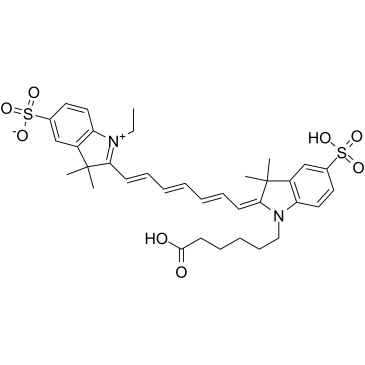CY7 |
| Catalog No.GC35772 |
Cy7 (Sulfo-Cyanine7) is a fluorescence labeling agent (Ex=750 nm, Em=773 nm).
Products are for research use only. Not for human use. We do not sell to patients.

Cas No.: 943298-08-6
Sample solution is provided at 25 µL, 10mM.
Cy7 (Sulfo-Cyanine7) is a fluorescence labeling agent (Ex=750 nm, Em=773 nm). Cyanine dyes are used to label proteins, antibodies, peptides, and oligonucleotides[1].
[1]. Lim B, et al. A Unique Recombinant Fluoroprobe Targeting Activated Platelets Allows In Vivo Detection of Arterial Thrombosis and Pulmonary Embolism Using a Novel Three-Dimensional Fluorescence Emission Computed Tomography (FLECT) Technology. Theranostics. 2017 Feb 26;7(5):1047-1061.
Average Rating: 5 (Based on Reviews and 40 reference(s) in Google Scholar.)
GLPBIO products are for RESEARCH USE ONLY. Please make sure your review or question is research based.
Required fields are marked with *




















